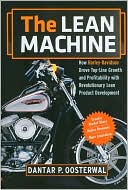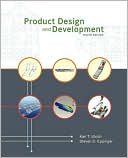Applying Design for Six Sigma to Software and Hardware Systems
Search in google:
This book provides a clear roadmap and guidance for developing products—not only simple products, but also high tech, information age products and systems involving both software and hardware development. The book provides real and realistic examples, so that the reader will have exactly what he or she needs to successfully apply DFSS to systems, software, and hardware development projects. The scope encompasses the development project from the development, justification, and prioritization of the business case and the associated project schedule, through the developing of customer-driven requirements and consequent efforts to fulfill those requirements with high confidence.It provides the tools and step-by-step guidance for systems engineers, programmers, software engineers, electrical engineers, engineering managers, program managers, and engineering students. It will also be useful for engineers who handle multidisciplinary situations involving software or electronic hardware, such as aerospace, biomedical, industrial, and power engineers. Software and electronics has seeped into many other disciplines as well, so it will also be useful for mechanical engineers, chemical engineers, and civil engineers.
Foreword xviiPreface xxiAcknowledgments xxviiAbout the Authors xxixChapter 1: Introduction: History and Overview of DFSS 1A Brief Historical Perspective on Six Sigma and Design for Six Sigma (DFSS) 1Historical Perspective on Design for Six Sigma 8DFSS Example 14Summary 27Chapter 2: DFSS Deployment 29Ideal Scenario for DFSS Deployment 29Steps Involved in a Successful DFSS Deployment 30DFSS Deployment: Single Project 45Minimum Set of Tools, and the “One Tool Syndrome” 47Goals for DFSS 48“The DFSS Project was a Success, But . . .” 50Summary 50Chapter 3: Governance, Success Metrics, Risks, and Certification 53DFSS Governance 53Success Metrics 57Product Development Risks 58DFSS Certification 62Summary 64Chapter 4: Overview of DFSS Phases 65DFSS for Projects, Including Software and Hardware 65DFSS Process Nomenclatures 69Requirements Phase 73Architecture Phase 75Architecture Phase for the Software Aspects 78Design Phase 78Integrate Phase 78Optimize Phase 78Verify Phase 80Summary 82Chapter 5: Portfolio Decision Making and Business Case Risk 83Position within DFSS Flow 83Portfolio Decision Making as an Optimization Process 84Financial Metric 85Portfolio Decisions and Resource Constraints 89Goals, Constraints, Considerations, and Distractions 91Adjusting Portfolio Decisions Based on Existing Commitments and the Organization’s StrategicDirection 92Summary: Addressing Business Case Risk 94Chapter 6: Project Schedule Risk 95Position within DFSS Flow 95Project Schedule Model 95The “Fuzzy Front End” and Delays Caused by Changing Requirements 97Time for First Pass: Critical Path versus Critical Chain 98Critical Chain/Theory of Constraints Project Management Behaviors 103Iterations, Qualification, and Release to Product 105Summary: Addressing Schedule Risk 106Chapter 7: Gathering Voice of the Customer to Prioritize Technical Requirements 107Importance and Position within DFSS Flow 107VOC Purpose and Objectives 110The VOC Gathering (Interviewing) Team 110Customer Selection 111Voices and Images 112Customer Interview Guide 113Planning Customer Visits and Interviews 115Customer Interviews 116KJ Analysis: Grouping, Structuring and Filtering the VOC 117Identifying Challenging Customer Requirements (NUDs) 120Kano Analysis 122Validation and Prioritization of Customer Requirements 124Translating Customer Requirements to System Requirements: The System-Level House of Quality 124Constructing a House of Quality 128Summary: VOC Gathering—Tying It All Together 134Chapter 8: Concept Generation and Selection 137Position within DFSS Flow 137Concept Generation Approaches 137Brainstorming and Mind-Mapping 140TRIZ 141Alternative Architecture Generation: Hardware and Software 143Generation of Robust Design Concepts 146Consideration of Existing Solutions 147Feasibility Screening 148Developing Feasible Concepts to Consistent Levels 148Concept Selection 149Summary 152Appendix: Kansei Engineering 152Chapter 9: Identification of Critical Parameters and FMEA 153Position within DFSS Flow 153Definition of a Critical Parameter 153Considerations from VOB and Constraints 155Prioritization and Selection of Critical Parameters 157FMEA 160Software FMEA Process (Software Systems, Software Subsystems, and Software Components FMEA) 164Software FMEA Implementation Case Study 169Considerations of Reliability and Availability 172Examples of Critical Parameters 174Summary 176Appendix: Software FMEA Process Documentation 176Chapter 10: Requirements Flow-Down 187Position within DFSS Flow 187Flow-Down for Hardware and Software Systems 190Anticipation of Potential Problems: P-Diagrams and DFMEA 193Target and Spec Limits 197Measurement System Analysis 198Capability Analysis 202Flow-Down or Decomposition 203Flow-Down Examples 206Initial Tolerance Allocation 208Summary 210Chapter 11: Software DFSS and Agile 211Measuring the Agile Design 218Summary 221Chapter 12: Software Architecture Decisions 223Software Architecture Decision-Making Process 224Using Design Heuristics to Make Decisions 227Using Architecture Tactics to Make Decisions 228Using DFSS Design Trade-Off Analysis to Make Decisions 230Using Design Patterns, Simulation, Modeling, and Prototyping for Decisions 234Summary 235Chapter 13: Predictive Engineering: Continuous and Discrete Transfer Functions 237Discrete versus Continuous Critical Parameters 238Methods for Deriving a Transfer Function for a Discrete Critical Parameter 241Logistic Regression for Discrete Parameters 242Methods for Deriving a Transfer Function for a Continuous or Ordinal Critical Parameter 244Existing or Derived Equation (First Principles Modeling) 245Modeling within a Spreadsheet, Mathematical Modeling Software, or Simulation Software 246Empirical Modeling using Historical Data: RegressionAnalysis and General Linear Model 247Empirical Modeling using Design of Experiments 251Empirical Modeling using Response Surface Methods 256DOE with Simulators: Design and Analysis of Computer Experiments (DACE) 259Summary 261Chapter 14: Predictive Engineering: Optimization and Critical Parameter Flow-Up 263Critical Parameter Flow-Up: Monte Carlo Simulation 266Critical Parameter Flow-Up: Generation of System Moments (Root Sum of Squares) 267Critical Parameter Scorecard 269Selecting Critical Parameters for Optimization 270Optimization: Mean and/or Variance 271Optimization: Robustness through Variance Reduction 273Multiple Response Optimization 280Cooptimization of Cpk’s 282Yield Surface Modeling 283Case Study: Integrated Alternator Regulator (IAR) IC for Automotive 288Summary 290Chapter 15: Predictive Engineering: Software Optimization 293Multiple Response Optimization in Software 293Use Case Modeling in Optimization 294Evaluate the Model 298Software Mistake Proofing 299Software Stability 303Summary 305Chapter 16: Verification of Design Capability: Hardware 307Position within DFSS Flow 307Measurement System Analysis (MSA) 307Improvements for Inadequate Measurement Systems 310The Risk of Failures Despite Verification: Test Escapes 313Determine the Capability 315Summary 316Chapter 17: Verification of Reliability and Availability 319Customer Perspective 319Availability and Reliability Flow Down 321Bathtub Curve and Weibull Model 322Software Reliability 325Early Life Failures/Infant Mortality 326Useful Life/Constant Failure Rate 326Wear Out 327Detailed Flowchart for Reliability Optimization and Verification 327Accelerated Life Testing 328WeiBayes: Zero Failures Obtained from ALT 330Risk of Failures Despite Verification: Reliability Test Escapes 331Methods to Improve Reliability and Availability 332Summary 333Appendix: Case Studies—Software Reliability, and System Availability (Hardware and Software Availability) 333Chapter 18: Verification: Software Testing Combined with DFSS Techniques 347Software Verification Test Strategy Using Six Sigma 350Controlling Software Test Case Development through Design Patterns 354Improving Software Verification Testing Using Combinatorial Design Methods 356Summary 358Bibliography 359Glossary of Common Software Testing Terms 359Chapter 19: Verification of Supply Chain Readiness 363Position within DFSS Flow 363Verification that Tolerance Expectations Will Be Met 366Confidence in Robust Product Assembly (DFMA) 366Verification of Appropriate and Acceptable Interface Flows 369Confidence in the Product Launch Schedule 369Confidence in Meeting On-Time Delivery and Lead-Time Commitments 370Case Study: Optoelectronic Multichip Module 380Summary 382Chapter 20: Summary and Future Directions 385Future Directions 386Index 391








